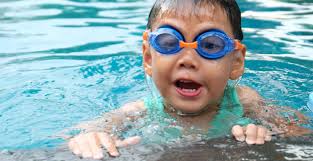Learning how to stay safe around water isn’t just a skill — it’s a responsibility. Whether you’re eyeing a career in aquatic education or simply want to feel confident when supervising children near a pool, understanding the time and commitment needed for a water safety course is a great place to begin.
In this guide, we break down how long an Austswim course typically takes, what to expect, and why this knowledge is vital in Australia’s water-loving culture.
Why a Water Safety Course Matters in Australia
Australia’s lifestyle is tightly linked to water — from backyard pools to coastal surf, rivers, lakes, and public swim centres. But with that love comes risk. Drowning remains one of the leading causes of accidental death in young children and continues to affect communities every year.
This makes water safety education not just important — but essential. A certified water safety course empowers participants to understand aquatic risks, build swimming confidence, and know how to act in emergencies. Whether you’re supervising kids at a local pool or leading school-based swim programs, these skills can save lives.
What Does a Standard Water Safety Course Involve?
A typical nationally recognised water safety course focuses on:
- Identifying and managing aquatic risks
- CPR and emergency response
- Teaching basic swim strokes and floatation techniques
- Effective supervision practices
- Understanding learner development, especially in children
Participants are taught through a combination of theory and practical in-water components. Assessment usually includes in-pool demonstrations and written tasks.
Most courses are competency-based, meaning your time to complete it will depend on your pace and availability — but there are standard benchmarks.
So, How Long Does the Austswim Course Take?
On average, the standard Austswim Teacher of Swimming and Water Safety course involves 14 to 16 contact hours, typically spread across two full days. This is followed by a supervised practical training period, which can take anywhere from 20 to 40 hours, depending on your availability and the host facility’s scheduling.
You’ll also be expected to:
- Complete online learning modules beforehand (around 4 to 6 hours)
- Hold or obtain a current CPR qualification
- Complete your supervised on-the-job teaching hours within 6 to 12 months
The course isn’t rushed — it’s built for understanding. Some candidates finish everything in a month. Others take several months to complete the practical component, especially if they’re balancing work or study.
Who Should Consider Enrolling?
This course is ideal for:
- Teachers and educators running school swimming programs
- Swim coaches and aquatic staff
- Lifeguards and pool managers
- Parents and carers involved in children’s aquatic activities
- Anyone wanting to pursue work at local pools, swim schools, or holiday camps
It’s also a stepping stone for anyone looking to specialise in teaching infants, people with disability, or adults.
The Real-World Impact of Completing a Water Safety Course
Let’s take Mel, a mum from the Gold Coast. She enrolled in a water safety course after her child’s daycare introduced a weekly swim program. “I was always a bit nervous around water,” she admits. “I didn’t know what to do in an emergency. Now, I’ve got confidence — not just for my own kids, but when helping others too.”
Stories like Mel’s are echoed across Australia — from young school leavers adding to their resume to retirees volunteering at community pools. The course creates ripple effects: stronger swimmers, safer communities, and empowered individuals.
Course Formats: In-Person vs Blended Learning
Depending on where you live, you’ll find different delivery options:
- In-person intensives: Traditional classroom and pool sessions, usually across a weekend.
- Blended learning: Online theory with in-person practicals, giving flexibility for those in remote or regional areas.
Either way, you’ll get access to qualified trainers and recognised certification. Many providers offer rolling course dates across metro and regional centres.
Recognised Across the Country
One of the biggest perks? National recognition. Once completed, this water safety course can open doors across Australia, whether you’re applying to work at a swim school in Melbourne or a council-run aquatic centre in Darwin.
It’s also a requirement for many education department swim programs and summer camp positions.
A Note on Ongoing Development
While the course is comprehensive, water safety doesn’t stop after certification. Many providers recommend updating your CPR annually and renewing your full qualification every three years. There are also specialist add-on courses in infant aquatics, access and inclusion, and competitive stroke development.
For credible data on aquatic incidents and guidance on community-based prevention programs, refer to the National Drowning Report by Royal Life Saving Australia.
Final Thoughts
A water safety course doesn’t take long — but its value lasts a lifetime. In just a few weekends, you can gain the knowledge, confidence, and nationally recognised skills to prevent accidents and even save lives.
If you’ve ever thought about getting qualified — now’s the time. Your local community, your family, and even your future self will thank you for it.
Want to help make water safer for everyone? Take the first step and explore a water safety course today.

